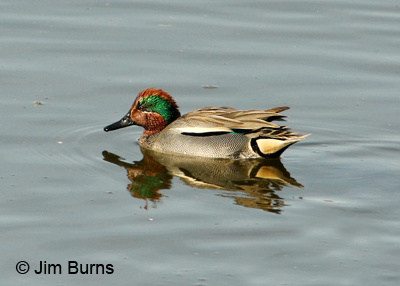
For years I have kept a folder with directions to good birding sites. Last week, as I cleaned out and updated this folder, I ran across an email from a Valley birder, who shall go unnamed to protect the innocent, that drives home how some development ends on a positive note for birds and birders. I’m going to quote here from this email, dated August 28, 2000(!), paraphrasing and deleting key street names which would give the site away, to see if readers can guess the area. I’m guessing that most Valley birders will be surprised and smile when I reveal the answer.
“There are several ways to access this area if you happen to be on foot or on a bicycle, but since I’m usually in a vehicle, this is how I do it. Please keep in mind that the area is unimproved, and entrance is at your own risk. Go northbound on __________ from __________. Stay in the right lane and slow way down before reaching the bridge. Turn right into the last driveway by the auto junkyard. Slip through the gate, or break in the gate, and enjoy! If you hear dogs barking, it’s best not to enter. We usually walk eastward along the bank in the afternoon when the sun is at our backs and the dogs seem to be somewhere else. We also can pick our way, carefully, down the rocky slope of the bank right at the gate . . . .”
Sounds rather ominous and foreboding, right? And maybe even illegal! Before I received these directions I had tried to access this site a couple times, thinking it held potential for water birds and migrant warblers in spring and fall, but I felt very uncomfortable and, most importantly, I don’t do dogs. These directions, solicited from a birder who occasionally posted lists from the site and sounded like they knew how to get exactly where I wanted to go, didn’t instill a lot of confidence or hope. I never birded this site . . . until a couple years ago after it had been dramatically “improved” by urban development.
Got it yet? Sure, it’s the far east end of Tempe Town Lake, now known in Valley birding vernacular as the Tempe Marsh. You just park in the northwest corner of the Tempe Marketplace lot and walk with scope and binoculars eastward for several blocks following the concrete sidewalk overlooking the reeds and trees in the Salt River channel. Water birds abound, raptors are common, and overwintering and migrant warblers forage in the treetops which are almost at eye level in some areas.
The Tempe Marsh is close, accessible, safe, clean, and legal (though it’s illegal to go down the bank to water level). It has become one of the choice birding sites in the Valley where 30 species in an hour standing in one spot is a given and, with a little walking and a little luck, you might see 50 species in a morning. A Eurasian Teal has overwintered for two years. And then you can walk over and shop or have lunch without moving your car.